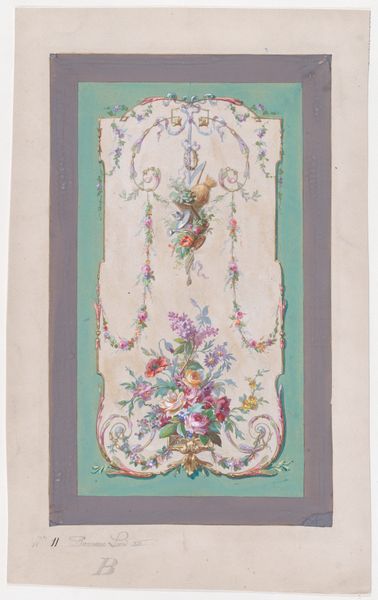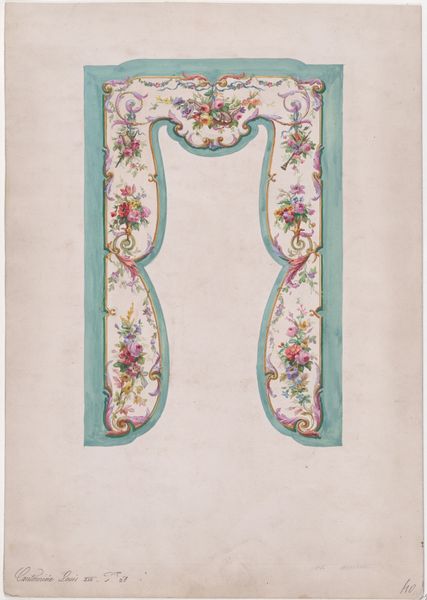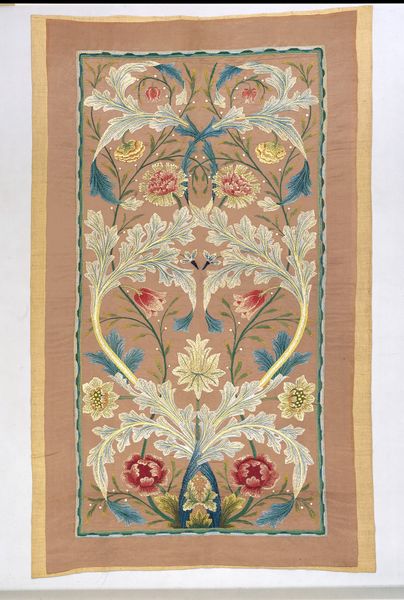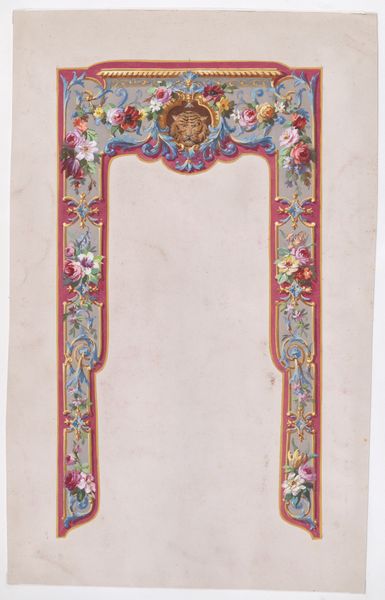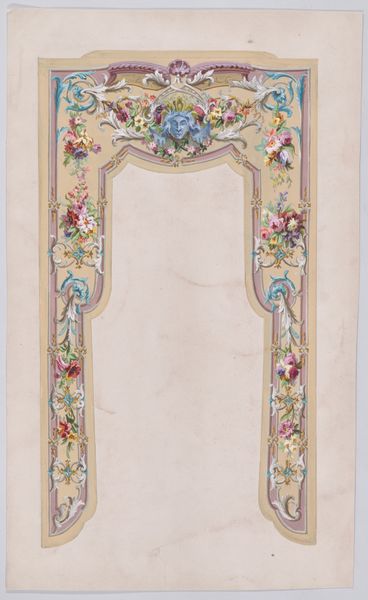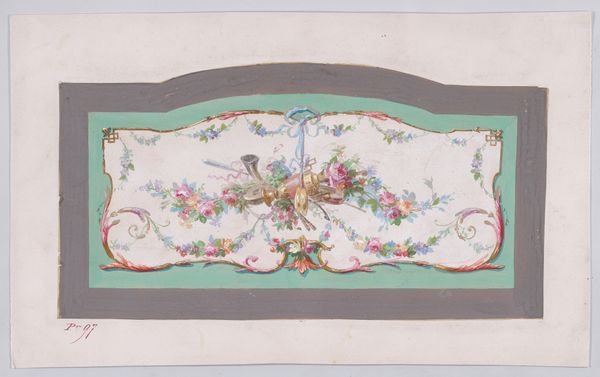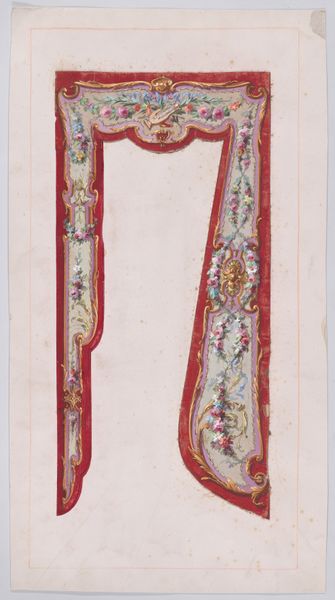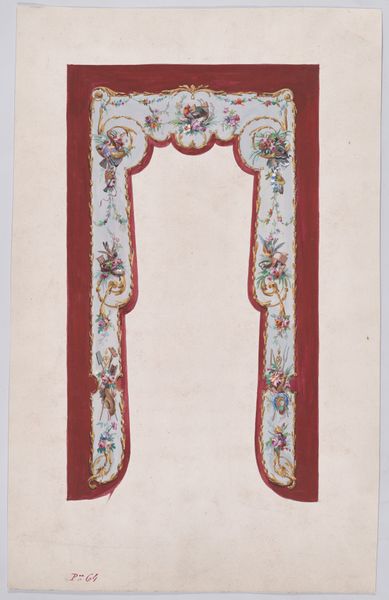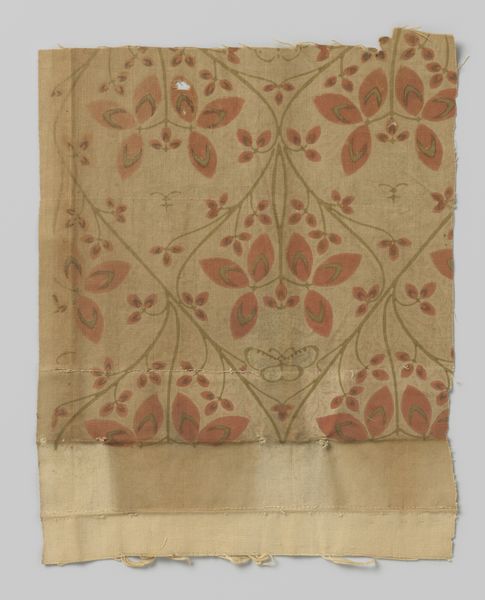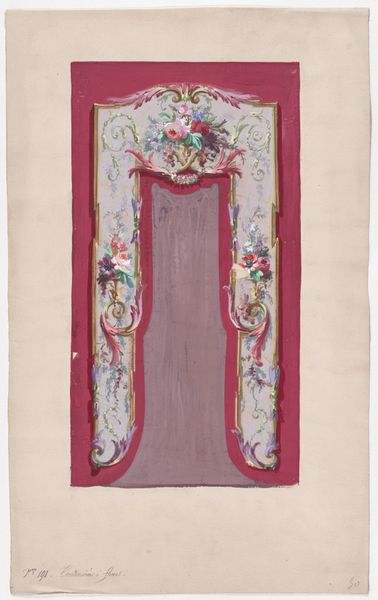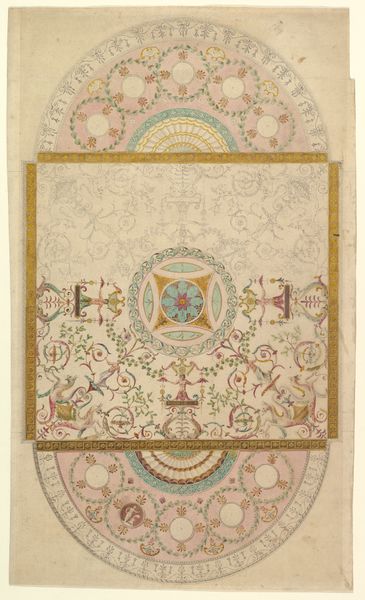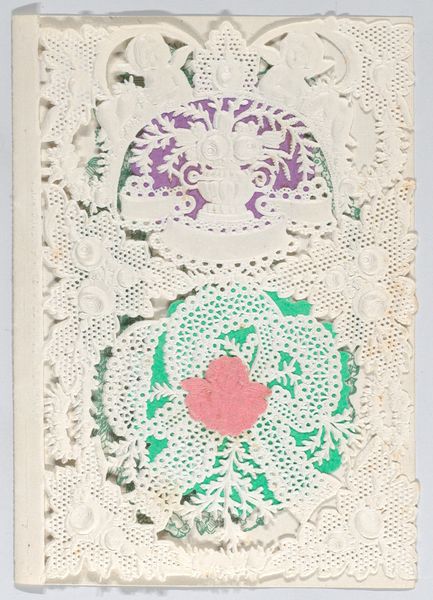
drawing, print, watercolor
#
drawing
#
water colours
# print
#
arts-&-crafts-movement
#
fashion and textile design
#
watercolor
#
decorative-art
#
watercolor
Dimensions: Sheet: 17 3/16 × 11 1/8 in. (43.6 × 28.2 cm)
Copyright: Public Domain
Curator: Before us, we have a design for a valance with floral motifs, likely conceived between 1870 and 1900 by an anonymous artist. The medium includes drawing, watercolor, and print. It resides here at the Metropolitan Museum of Art. Editor: It strikes me immediately as rather delicate. The color palette, especially the interaction between the muted pastels and the soft green border, evokes a sense of refined elegance. The craftsmanship seems incredibly intricate. Curator: Yes, the piece is emblematic of the Arts and Crafts movement's principles, which valued meticulous handcrafting and drew inspiration from natural forms. The repeating floral motifs, arranged symmetrically, point to a desire for harmony and balance in design. Editor: Observe how each cluster of flowers differs slightly. The roses, lilies, and other blooms... could each flower species symbolize something particular about the space for which the valance was intended? Do we see an evocation of growth, prosperity, or perhaps even love and remembrance? Curator: Your attention to detail is astute! Iconographically, you might be onto something there, but I see the artist using those varied shapes and tones to introduce micro-variations in an otherwise repetitive scheme to ensure a pleasing complexity. This element prevents the overall form from becoming tedious to the eye. Editor: I agree about its potential for variety within form. The valance, as a symbol, traditionally served as an ornamental feature concealing curtain fixtures; however, it's clear that this example, through such ornamentation, plays an integral aesthetic role in shaping perceptions of domesticity and social decorum. Curator: Indeed. Further note how the swirling lines and organic forms within the floral arrangements echo Art Nouveau influences beginning to enter into design language. You see the synthesis of different stylistic tendencies melding to create something unique within interior space, providing character and a unique style. Editor: In closing, looking beyond the floral arrangement alone, I cannot help but find beauty in the silent language it brings to speak from the domestic sphere—its attempt to mediate history through flowers on walls of our private spaces. Curator: And to add, focusing on that very synthesis—from overall layout right to floral detail, its symmetrical yet dynamic composition, speaks volumes about the designer’s sensitivity to aesthetic balance and spatial harmony within visual craft and design.
Comments
No comments
Be the first to comment and join the conversation on the ultimate creative platform.
